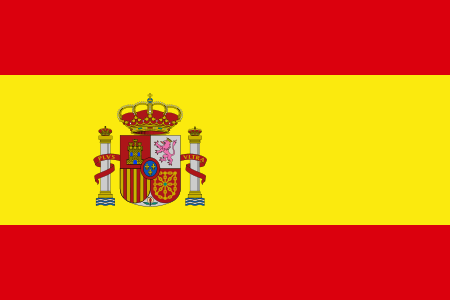Spain flag Colors Code hex, png svg
History of the Spanish Flag
Early History
- Medieval Period: The earliest flags in Spain were related to the various kingdoms, such as the Kingdom of Castile, the Kingdom of Aragon, and the Kingdom of Navarre. Each had its own distinct banner.
- Habsburg and Bourbon Dynasties: As Spain unified under the Habsburgs and later the Bourbons, a variety of flags were used. The Cross of Burgundy was a prominent symbol during the Habsburg period.
- 18th Century: In 1785, King Charles III of Spain decreed the adoption of the red and yellow flag to distinguish Spanish ships from those of other nations, particularly in response to confusion with other Bourbon-ruled countries like France.
Modern Era
- First Official Adoption: The red and yellow flag officially became the national flag of Spain on May 28, 1785. This was initially for naval purposes and later extended to all military and government use.
- Second Spanish Republic (1931-1939): During this period, a tricolor flag (red-yellow-purple) was used.
- Post-Civil War and Francoist Spain: After the Spanish Civil War, the traditional red and yellow flag was reinstated, though the coat of arms underwent several changes.
- Constitutional Monarchy (1978-present): Following the death of Franco and the transition to democracy, the current version of the flag was established by the Spanish Constitution of 1978.
Colors and Their Meanings
Red and Yellow (La Rojigualda)
- Red (Rojo): Historically, red has been associated with the various regions of Spain, such as Aragon, Navarre, and León. It also represents the blood shed by those who defended Spain.
- Yellow (Amarillo): The yellow color signifies the golden age of Spain during the 16th and 17th centuries when Spain was a major world power.
Coat of Arms (Escudo)
The current coat of arms, which sits on the yellow stripe and spans both red stripes, has several elements:
- Pillars of Hercules: Represent the mythological pillars that mark the edge of the known world in antiquity.
- Crown: Symbolizes the constitutional monarchy.
- Quartered Shield: Represents the historical kingdoms of Spain:
- Castle: Castile
- Lion: León
- Chains: Navarre
- Flower: Granada
- Stripes: Aragon
- Three fleurs-de-lis: Bourbon-Anjou dynasty
Summary
The Spanish flag, known as “La Rojigualda,” features two horizontal red stripes and a wider yellow stripe in the middle with the national coat of arms. The red and yellow colors have historical significance, symbolizing the country’s regional heritage and its historical period of power. The coat of arms incorporates symbols representing Spain’s historical regions and the monarchy, reflecting the nation’s rich and diverse history.
Guess the Flags Quiz
Sharing is caring 🤗

National Symbols 👇
- 🏁 National Flags
- 🦁 National Animals
- 🐦 National Birds
- 🌻 National Flowers
- 🌴 National Trees
- 🥭 National Fruits
- 🍹 National Drinks
- 👴 National Founders
- ☘️ National Emblems
- 🍲 National Dishes
- 🏛️ National Monuments
- ✍️ National Poets
- 🕌 National Mausoleums
- 🎺 National Instruments
- 🦸 National Heroes
- 📆 National Days

